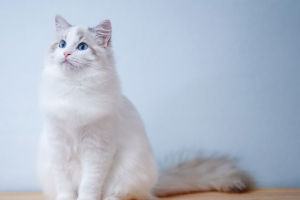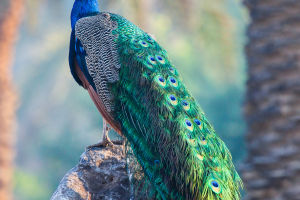Macaws, the brilliantly colored members of the parrot family, grace the rainforests of Central and South America with their vibrant plumage.
These beautiful birds have evolved remarkable adaptations to thrive in their natural habitat.
With their vivid coloring, macaws are perfectly suited for life in lush rainforests, where green canopies, colorful fruits, and blooming flowers abound. Their large, powerful beaks effortlessly crack nuts and seeds, while their scaly tongues, equipped with a unique bone, adeptly tap into juicy fruits.
Macaws possess gripping toes that allow them to cling to branches and manipulate objects. Their graceful, long tails add to their allure, making them a sight to behold in the canopy.
These intelligent and social birds form flocks of 10 to 30 individuals, their loud calls and squawks echoing through the forest. Vocalizations serve various purposes, from flock communication and territory marking to individual recognition.
Remarkably, some macaw species can even mimic human speech.
At night, flocks settle in trees for sleep, while mornings see they embark on long flights in search of sustenance. Their diet comprises a wide range of fruits, nuts, insects, and even damp soil, which aids in digestion and neutralizes toxins.
Macaws exhibit lifelong monogamy, with mates sharing food and engaging in mutual grooming. During the breeding season, mothers incubate eggs while fathers forage and provide nourishment.
Among the 17 recognized macaw species, several face significant conservation challenges. Tragically, habitat loss and illegal trapping for the pet trade threaten their existence. Species like the red-fronted and blue-throated macaws teeter on the brink of extinction.
Macaws' allure extends beyond their natural habitat, captivating as popular pets. However, this demand contributes to illegal trade and further endangers wild populations. Macaws have been known to live up to 65 years in captivity, a testament to their adaptability in human care.
While appreciating the beauty of macaws, it remains crucial to support conservation efforts. Protecting their rainforest homes and combatting illegal trade is vital to ensuring their survival.
Organizations strive to preserve these magnificent birds and their dwindling habitats, battling deforestation and habitat loss.
The macaw family encompasses fascinating species, each with its own distinct characteristics.
The cobalt-blue hyacinth macaw reigns as the largest parrot globally, while the scarlet macaw, with its vivid red, yellow, and blue plumage, is a renowned New World parrot.
The blue-and-yellow macaw stands out with its striking combination of turquoise-blue feathers, a yellow chest, and a white face.
Macaws, with their incredible beaks, crack open tough seeds and nuts, while their exploratory nature leads them to fruits, flowers, and leaves.
Some species, such as the blue-and-yellow macaw, have been observed consuming diverse plants, including those toxic to humans. The clay-rich riverbanks of Manú National Park in Peru attract flocks of macaws, providing essential minerals that aid in detoxification.


